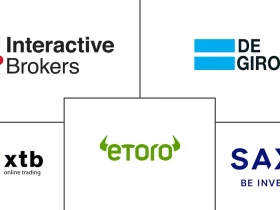
Passenger car companies in Afghanistan
Afghanistan’s passenger car market is relatively small and underdeveloped due to decades of conflict, limited infrastructure, and economic challenges. However, a few key companies and brands have managed to establish a presence in the country, mainly through imports and local dealerships.
Imported Brands Dominating the Market
Afghanistan does not have its own major car manufacturing industry. The passenger car market is primarily dominated by imported vehicles, with Japanese, South Korean, and German brands being the most common. Among these, Toyota holds a significant share due to its reputation for durability and reliability in rugged conditions. Models like the Toyota Corolla and Land Cruiser are especially popular across Afghanistan.
Other Japanese brands such as Nissan, Honda, and Suzuki also have a solid presence, catering to both middle- and lower-income groups. Suzuki Mehran and Honda Civic are frequently seen in urban areas like Kabul, Herat, and Mazar-i-Sharif.
South Korean brands, such as Hyundai and Kia, have gained popularity in recent years. These brands are appreciated for offering affordable yet comfortable vehicles. Dealerships in major Afghan cities often import these cars directly from the Gulf or other Asian markets.
German brands such as Mercedes-Benz, BMW, and Volkswagen are also available but are generally considered luxury vehicles, accessible to wealthier individuals or government officials. Older models of Mercedes-Benz are especially common due to their historic popularity during the 1980s and 1990s.
Car Dealerships and Markets
In Afghanistan, formal car dealerships exist mostly in major urban centers. For example, Kabul has several car dealers that import used vehicles from countries such as the UAE, Japan, and South Korea. Many of these vehicles arrive via Pakistan or Iran. The Kabul Car Market (Koch-e-Motarforoshi) is a well-known area where locals can buy both new and used passenger cars.
Used cars dominate the market due to affordability and easy availability. Buyers often prefer vehicles with right-hand drive converted to left-hand drive, though this practice can sometimes compromise safety.
Challenges in the Afghan Car Market
Several challenges impact the growth of passenger car companies in Afghanistan:
Poor road infrastructure makes it difficult for some cars to operate efficiently, increasing the demand for durable vehicles like SUVs.
Import restrictions and taxes can make cars expensive.
Lack of financing options limits car purchases to cash-only buyers.
Security concerns in certain provinces hinder formal dealership expansion.
Electric and Hybrid Vehicles
There is limited penetration of electric or hybrid cars in Afghanistan due to the lack of charging infrastructure and public awareness. However, as regional partners invest in energy and transport infrastructure, this could change in the coming years.
Conclusion
While Afghanistan doesn’t manufacture passenger cars, several international companies operate through imports and dealerships. Toyota, Hyundai, Suzuki, and Mercedes-Benz are among the most recognized brands in the country. The market remains largely informal, with used cars dominating sales. Future growth will depend on infrastructure improvements, economic development, and political stability. Would you like a list of top dealerships in Kabul or another city?


Leave a Reply